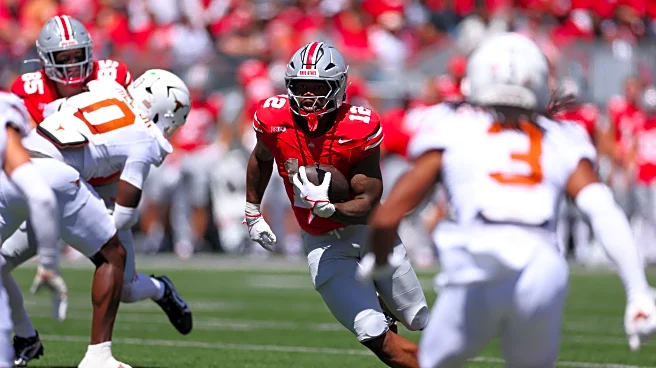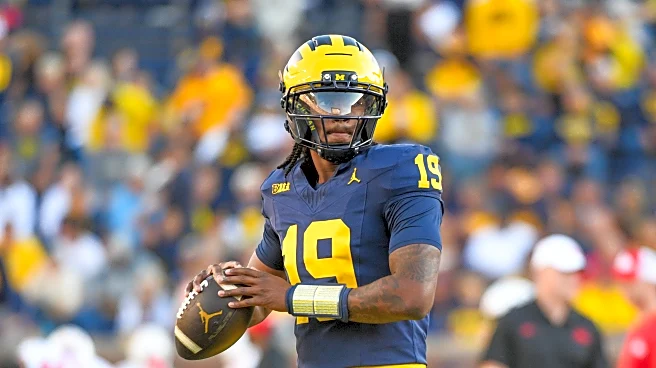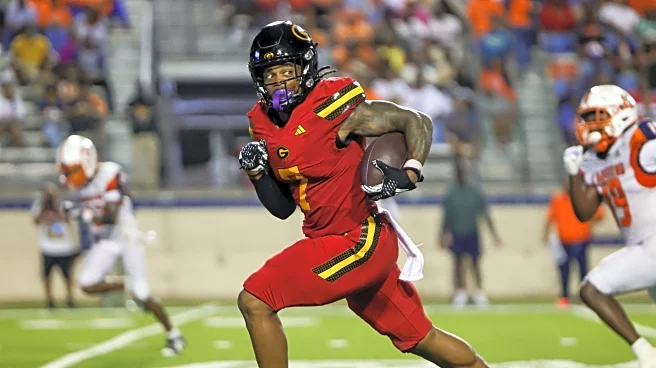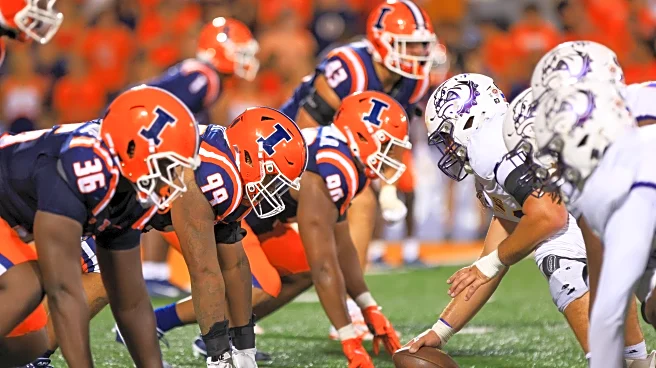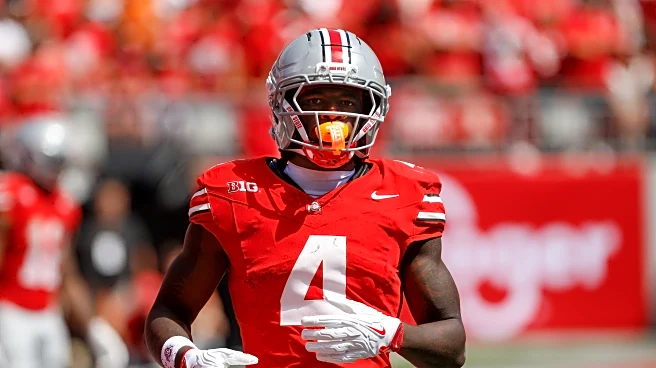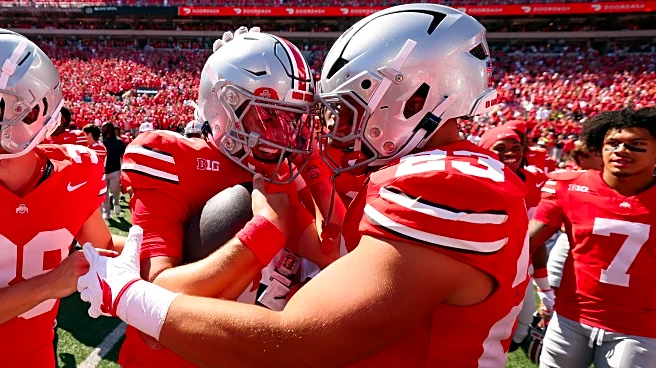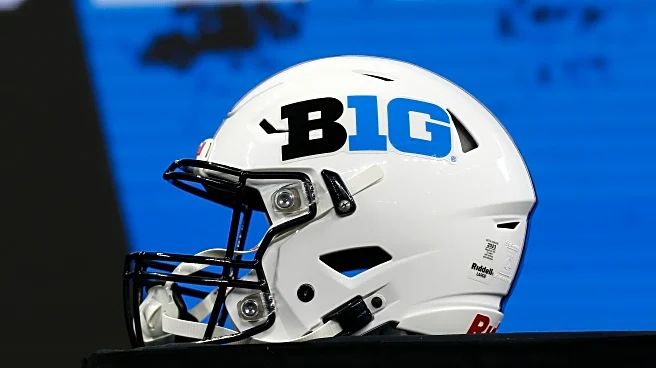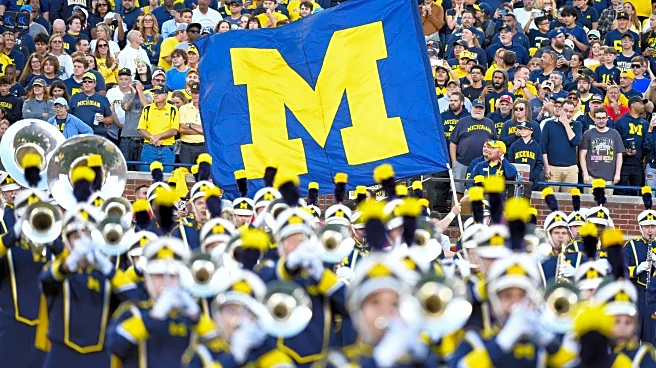
Everybody knows that one of the best parts of being a sports fan is debating and dissecting the most (and least) important questions in the sporting world with your friends. So, we’re bringing that to the pages of LGHL with our favorite head-to-head column: You’re Nuts.
In You’re Nuts, two LGHL staff members will take differing sides of one question and argue their opinions passionately. Then, in the end, it’s up to you to determine who’s right and who’s nuts.
Today’s Question: What do you want to see Ohio State work on before the start of the Big Ten season?
Jami’s Take: Establish the running game
Though No. 3 Ohio State got off to a strong start to the season, with a stellar defensive performance and a solid opening act from starting quarterback Julian Sayin, the game also exposed a few areas of improvement for the Buckeyes ahead of their conference schedule.
They’ll have a chance to work through some of these issues (most of them seemingly minor) when they welcome Grambling St. to the Shoe this weekend at 3:30 p.m. ET, but the primary issue they need to address is their ability to establish a run game.
Heading into Saturday’s game against Texas, there was a lot of hype around the Buckeyes’ running backs room—and much of that is likely to be valid. CJ Donaldson and James Peoples are extremely talented, but perhaps expectations were too high coming out of the gate, especially given some additional changes to the offensive line. Having to replace TreVeyon Henderson and Quinshon Judkins is a tough blow, and the impact of that might have been underestimated.
It’s entirely understandable for even the best players to need a game or two to gel—with Donaldson and Peoples and its new offensive line configuration, OSU certainly seems to have all the right pieces to the puzzle, but they’ll have to make those pieces fit better than they did Saturday against Texas before they get to the height of their Big Ten schedule.
On Saturday, Donaldson and Peoples combined for just 87 rushing yards on 29 carries, an average of about 3 yards per play. More than 75 percent of that production can be credited to Donaldson, who logged 67 yards and a touchdown on 19 carries, while Peoples struggled more, netting just 20 yards on 10 carries.
The shoes they need to fill are big ones—in 2024, Henderson averaged 7.1 yards a carry with 1,016 total rushing yards and 10 touchdowns for the Buckeyes in 2024, along with 284 receiving yards and one touchdown through the air, while Judkins ran for 1,060 rushing yards and 14 touchdowns, plus 161 receiving yards and two receiving touchdowns. Both went in the second round of the NFL Draft (No. 38 and No. 36, respectively).
So with that in mind, is it time for a five-alarm fire drill? Not yet. In fact, opening the season against Texas should be considered a net positive: We can view this as a learning lesson, and it’s early enough in the season to course-correct.
On numbers alone, Saturday’s totals aren’t that far off from Henderson’s and Judkins’ numbers in the 2024 Cotton Bowl. For context, in that Cotton Bowl game, the Buckeyes totaled 81 rushing yards on 24 attempts, averaging 3.4 yards per carry.
The most concerning aspect of these statistics, perhaps, is the fact that Henderson averaged 7 yards per carry on the day, double that of Donaldson on Saturday, and 3.5 times better than Peoples. Heading into the Big Ten schedule, we’ll need to see the production numbers start to creep closer to Henderson’s, particularly against teams like Penn State and Michigan, who have the defense to close off running lanes.
Ultimately, with as many offensive weapons as the Buckeyes have, the running backs don’t need to log 20- or 30-yard runs every time they carry the ball, but they do need to do a better job of moving the line of scrimmage by five or six yards on second down. Consistent small ball with the occasional breakout run would be enough to boost the offensive options.
While the offensive line bears some responsibility for creating openings for the running game, the issue seemed to be more on Donaldson and especially Peoples on Saturday. The two units together will need to find a way to generate more momentum on the ground, but the presence of running lanes doesn’t matter much if the running backs don’t find the holes or read the plays, which seemed to be a challenge, particularly for Peoples.
It’s possible this was just first-game jitters, but it could also indicate a larger issue for the Buckeyes if they can’t correct it before they head to Washington in a month—and especially if this issue persists when they get to Champagne to face No. 11 Illinois on October 11. It will be all but impossible for Ohio State to get through its regular season schedule, let alone through the playoffs, without improvements on the ground, so it will need to find a way to generate more momentum if the Buckeyes hope to repeat their title.
Matt’s Take: Please, make the special teams special again.
In the grand scheme of things, this is much smaller potatoes than Jami’s pick; I admit that and acknowledge it. However, because I have far more confidence in Ohio State’s offensive coaches than special teams coaches, I’m not quite as worried… you know what? It’s not even about being worried; it’s about being annoyed.
I don’t think that the special teams will ultimately cost the Buckeyes a chance at a second-straight title. Sure, a missed field goal or a shanked punt could obviously be the difference in a close game, but on the whole, I don’t think that’s likely. So the issue, to me, is that this is Ohio State, the home of Mike Nugent, the home of Cameron Johnston, the home of Ted Ginn Jr., there is absolutely no excuse for OSU’s special teams not to be weapons.
Now, I understand the coaching philosophy of trying to minimize the variance that can occur on special teams. With the new kick-off rules, it is more advantageous to just fair catch the ball and take it at the 25 than risk bringing it out and getting stopped at the 15. But in doing so, you take away the opportunity to dramatically improve your field position, or even score.
Similarly, on punt returns, Ohio State’s offense is so dynamic that the risk-reward of attempting to run it back doesn’t outweigh the benefit of simply fair catching and turning the ball over to the offense. And, of course, there is also the injury risk associated with either kick or punt returns.
So I understand why Ryan Day has seemingly chosen to keep that particular arrow in his quiver during his tenure, but that doesn’t mean I have to like it.
But then, on the kicking side of special teams, I can think of no logical explanation for why The Ohio State University doesn’t always have a placekicker who can routinely connect on 50+-yard field goals when called upon. Hell, Lou Groza literally went to Ohio State, and we have been saddled with slightly above-average Power 4 kickers for far too long.
Look, I get it, Ohio State is regularly one of the best offenses in the country, so you won’t often get opportunities to kick high-pressure field goals. But you know what type of opportunities you could get? Opportunities to kick field goals to win Big Ten and national titles.
And then think about how different last week’s game against Texas would have been if OSU had a punter who had the ability to uncork a 70-yarder every once in a while. Then, after a goal-line stand, if the offense just gets one first down, the punter could legitimately flip the field all on his own.
Day has done a remarkable job revolutionizing both the Buckeye offense and defense, but he has effectively neutered the program’s special teams. Following Urban Meyer and Jim Tressel before him, fans have had it drilled into their heads for decades that special teams are just as important as offense and defense and that the punt is the most important play in football. But now, we are stuck every week watching special teams clearly be an afterthought or something that Day would prefer simply to sim through.
At this point, I think you can unequivocally say that Ohio State is the best college football program in the country, but they are doing it without using all of the tools at their disposal. Right now, their special teams are solid and safe, but with the talent and resources available to this team, there’s absolutely no excuse for the special teams not to be special.
